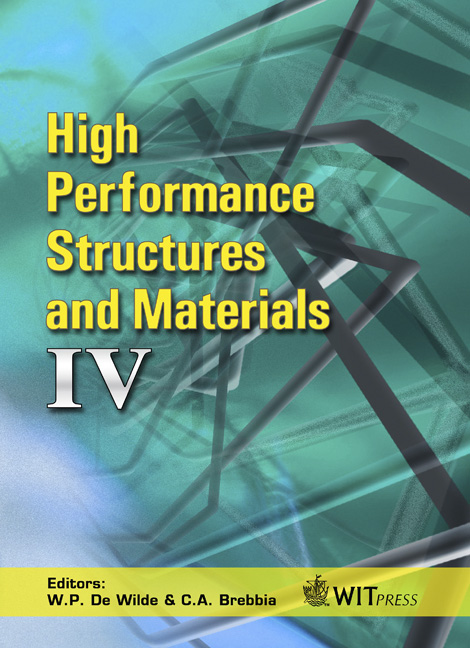Homogenization Of Regular Cross-ply Polymer-matrix Laminates
Price
Free (open access)
Transaction
Volume
97
Pages
10
Page Range
23 - 32
Published
2008
Size
440 kb
Paper DOI
10.2495/HPSM080031
Copyright
WIT Press
Author(s)
T. Niezgoda, M. Klasztorny & R. Gieleta
Abstract
In the classic laminate theory, a polymer-matrix laminate is modelled as a thin anisotropic plate of a constant thickness, subject to the Kirchhoff–Love kinematical hypothesis. However, this hypothesis is mostly unsatisfied because of relatively low values of the shear moduli. The laminate elastic response is better simulated under the Reissner–Mindlin kinematical hypothesis. Reformulation of the classic laminate theory to the first – order shear – deformation theory is very sophisticated but useless from the point of view of the Finite Element Method. This paper formulates the exact stiffness theory of a regular cross-ply polymer-matrix laminate, denoted with the symbol CP xFRP, of the plies’ configuration [0/90]nS, 4 ≥ n . The plies, made of a specified woven fabric, are repeatable with respect to their thickness and microstructure. This type of laminates is widely used in engineering practice. On the mesomechanics level, a regular CP xFRP laminate is modelled as a homogeneous orthotropic plate. The theory employs respective boundary-value problems related to a representative volume element and the most advanced variant of the exact stiffness theory of a unidirectional xFRP composite. The final results are presented in the form of analytic formulae for nine effective elastic constants of the laminate, describing an orthotropic model of the homogenized CP xFRP laminate. A numerical example of homogenisation is also presented. Keywords: cross-ply polymer-matrix laminates, homogenisation, exact stiffness theory, linear elasticity, orthotropy.
Keywords
cross-ply polymer-matrix laminates, homogenisation, exact stiffness theory, linear elasticity, orthotropy.





